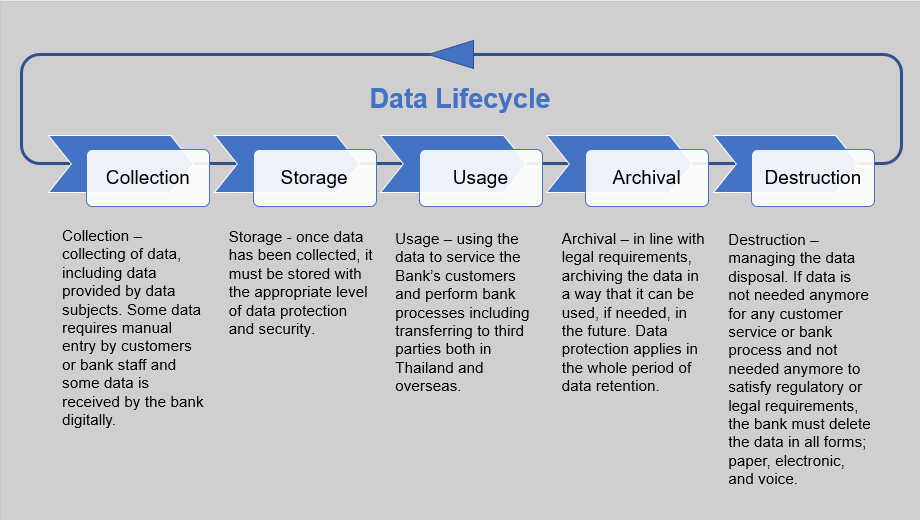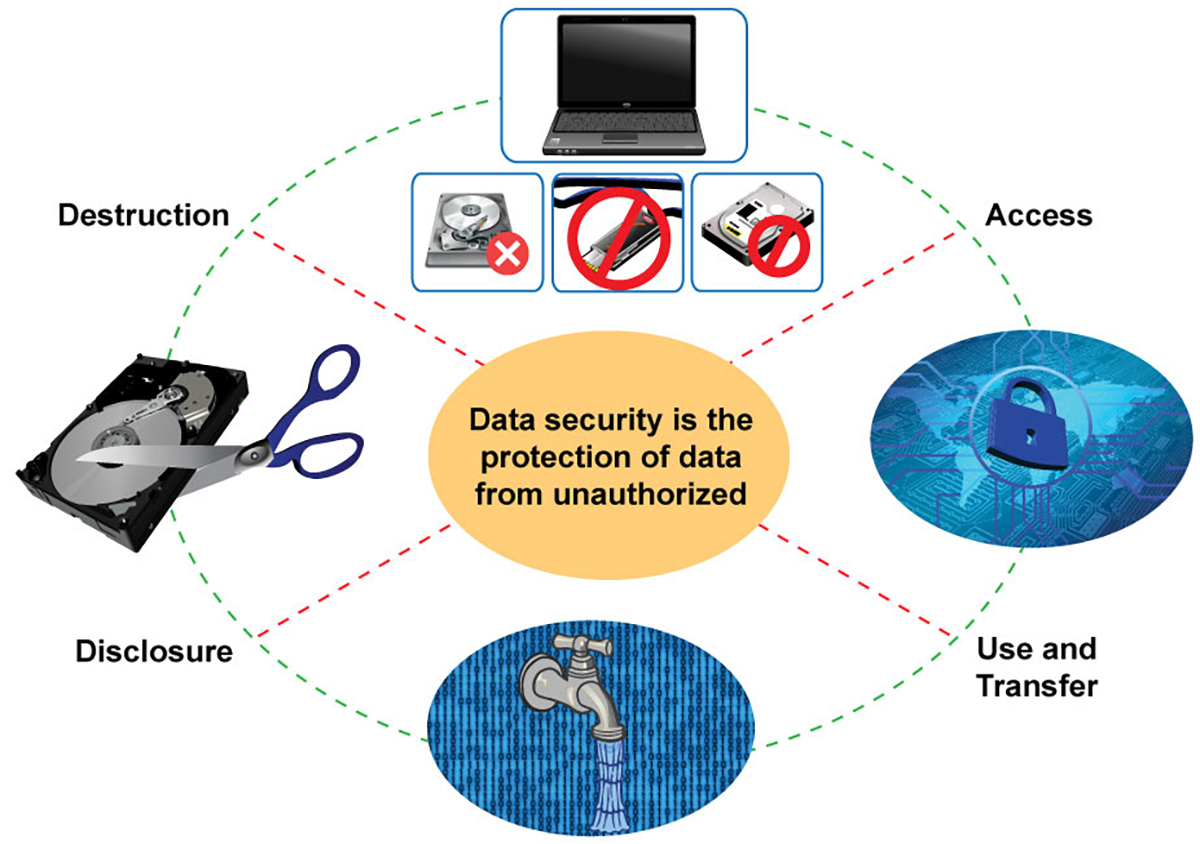Best Practices for Data Destruction to Strengthen Your Cyber Security Structure
Best Practices for Data Destruction to Strengthen Your Cyber Security Structure
Blog Article
Exploring the Value of Data Destruction in the Context of Computer Safety And Security Services and Protecting Confidential Data
In an age where information breaches are increasingly typical, the importance of effective information destruction can not be overemphasized. What techniques can organizations implement to boost their data destruction methods?
Understanding Data Devastation
Data devastation is an essential element of computer system safety that entails the long-term removal of data from storage space devices to avoid unauthorized accessibility and possible data breaches. In an increasingly electronic landscape, companies face increased threats connected with delicate information being improperly accessed or manipulated. Reliable data destruction safeguards against these risks, making certain that private dataâEUR" such as customer information, intellectual property, and financial recordsâEUR" can not be recovered after disposal.
Understanding the significance of information damage prolongs beyond mere compliance with legal and regulatory structures; it is crucial for keeping business stability and count on. When data is improperly managed or improperly ruined, the repercussions can be serious, including economic loss, reputational damages, and lawful obligations.

Techniques of Information Removal

One prevalent technique is data wiping, which includes overwriting existing data with random patterns multiple times. This strategy provides the initial information irretrievable, making it a preferred choice for organizations seeking to protect secret information.
One more technique is degaussing, which uses a powerful magnetic area to disrupt the magnetic domains on storage gadgets, successfully getting rid of the information. This strategy is specifically reliable for magnetic media yet is not relevant to solid-state drives.
Physical devastation is one more robust method, involving the shredding or crushing of storage space gadgets. This technique guarantees that information recuperation is basically difficult, making it ideal for very delicate details.
Last but not least, security can act as a complementary method to data eradication. By securing information prior to deletion, organizations can include an added layer of security, ensuring that also if residues are recuperated, they remain inaccessible without the decryption trick. Each technique ought to be chosen based upon the level of information level of sensitivity and the details protection requirements of the company.
Legal Conformity and Data Safety And Security
Organizations should navigate a complex landscape of lawful demands connected to information protection, specifically after executing techniques of information obliteration. Different regulations, such as the General Information Defense Guideline (GDPR) and the Wellness Insurance Policy Mobility and Responsibility Act (HIPAA), enforce rigorous standards on how companies should manage and dispose of delicate data. Failure to abide by these policies can bring about significant lawful repercussions, consisting of substantial penalties and reputational damage.
Information destruction procedures have to be thoroughly recorded to demonstrate compliance with suitable regulations and standards. This paperwork not only functions as evidence of adherence to lawful commitments but likewise highlights a commitment to protecting sensitive details. Organizations ought to additionally develop clear plans relating to information retention and destruction timelines, making sure that information is not held longer than needed.

Moreover, routine audits and evaluations of data damage methods are crucial to maintain compliance and adapt to developing legal structures (data destruction). By proactively addressing lawful requirements, organizations can reduce risks related to information violations and demonstrate their commitment to data security. Inevitably, prioritizing legal compliance in information damage processes is not simply a regulative responsibility, but a basic element of find more a robust information safety technique
Effect On Service Track Record
The credibility of a business can be dramatically affected by its strategy to data devastation and administration. In today's digital landscape, where information violations can happen anytime, the failing to appropriately deal with delicate information can cause severe repercussions. Organizations that inadequately take care of data devastation threat exposing personal consumer details, which not just violates privacy legislations but also wears down trust fund among customers and stakeholders.
A tarnished track record can cause decreased customer loyalty, as customers come to be hesitant to engage with a business that has shown carelessness in securing their data. Adverse attention bordering an information breach can have a lasting effect, as prospective clients may be hindered by the regarded lack of security. This can cause a straight decrease in earnings and market share.
Moreover, companies that focus on information destruction as component of their protection technique can boost their reputation by showcasing their commitment to securing delicate info. By embracing rigorous information monitoring techniques, organizations can not only mitigate threats yet also position themselves as reliable entities in their corresponding sectors, therefore reinforcing their additional hints general brand name picture.

Finest Practices for Secure Disposal
Executing best practices for secure disposal of information is vital for reducing threats connected with data breaches and making certain conformity with privacy guidelines. Organizations ought to adopt a detailed data disposal plan that describes treatments for both physical and electronic information destruction.
For physical information storage gadgets, such as disk drives, shredding or degaussing is suggested to prevent information recovery. Furthermore, companies ought to maintain a chain of wardship paperwork throughout the disposal process, ensuring responsibility and traceability of disposed items.
For digital information, utilizing software that complies with sector standards for data cleaning is critical. This software ought to overwrite existing information multiple times, making healing essentially impossible. It is also essential to verify the performance of the data damage procedure via audits or third-party assessments.
Training workers on secure disposal techniques includes another layer of safety and security, as human mistake can usually lead to data exposure. Consistently reviewing and updating disposal policies makes sure placement with advancing regulations and technological improvements. By carrying out these ideal techniques, companies can significantly reduce the risk of unauthorized data access and boost their total information defense approach.
Verdict
Finally, data destruction is a basic element of computer safety solutions that ensures the security of secret information from unapproved access. Executing efficient techniques of data eradication, sticking to lawful conformity, and recognizing the impact on company credibility are vital components of a comprehensive data protection approach. By taking on finest practices for safe and secure disposal, companies can foster count on with customers and guard delicate data, inevitably adding to a much more safe digital see this page landscape.
In a period where information breaches are significantly typical, the significance of reliable data destruction can not be overemphasized.Data destruction is an essential element of computer security that entails the long-term removal of data from storage space devices to protect against unauthorized accessibility and potential information violations. Organizations must additionally develop clear plans concerning data retention and devastation timelines, making certain that data is not held longer than essential.
By proactively attending to legal requirements, organizations can minimize dangers linked with data violations and show their commitment to data protection (data destruction). Ultimately, focusing on lawful conformity in data damage procedures is not just a regulatory responsibility, but an essential element of a durable information safety and security strategy
Report this page